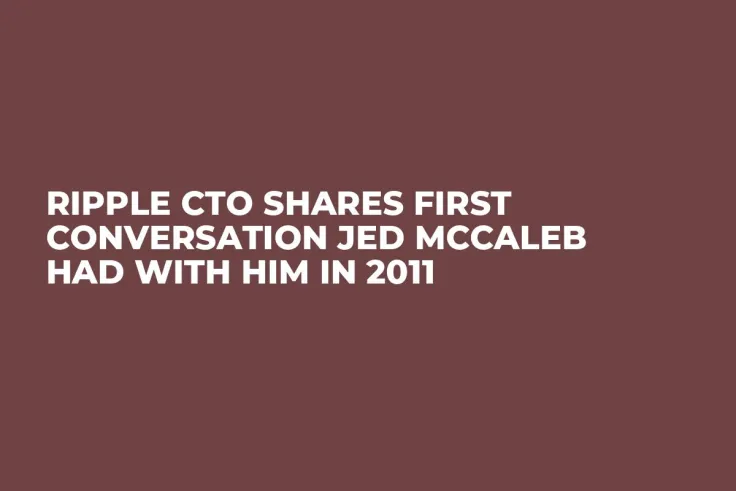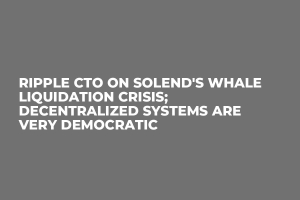
Disclaimer: The opinions expressed by our writers are their own and do not represent the views of U.Today. The financial and market information provided on U.Today is intended for informational purposes only. U.Today is not liable for any financial losses incurred while trading cryptocurrencies. Conduct your own research by contacting financial experts before making any investment decisions. We believe that all content is accurate as of the date of publication, but certain offers mentioned may no longer be available.
Ripple CTO David Schwartz shared his ''hiring'' conversation with former CTO and Ripple Co-founder Jed McCaleb way back in 2011. He wrote, "When Jed McCaleb first hired me back in 2011, the question he hired me to answer was whether you could swap out PoW for a distributed agreement algorithm more like PBFT and keep Bitcoin's benefits."
Yep. When Jed McCaleb first hired me back in 2011, the question he hired me to answer was whether you could swap out PoW for a distributed agreement algorithm more like PBFT and keep bitcoin's benefits.https://t.co/RRiKZyuz01
— 𝙳𝚊𝚟𝚒𝚍 𝚂𝚌𝚑𝚠𝚊𝚛𝚝𝚣 (@JoelKatz) October 12, 2022
The Ripple CTO stated this while responding to a user question about whether XRP Ledger was the first distributed ledger not reliant on proof of work (POW). In his tweet, Schwartz provided a link to a 1999 paper that described a new replication algorithm that could withstand Byzantine faults. The paper noted that Byzantine fault-tolerant algorithms will be increasingly important in the future as malicious attacks and software errors become more common.
Arthur Britto, David Schwartz and Jed McCaleb started developing XRP Ledger (XRPL) in 2011. Britto uploaded lines of code on June 2, 2012, which generated 100 billion tokens known as "XNS." This date is now officially regarded as XRP's birthday. The current XRP Ledger version was launched in December 2012.
The XRPL uses a consensus protocol in which designated servers called validators agree on the order and outcome of XRP transactions every 3-5 seconds. Bitcoin, on the other hand, uses proof of work, with miners responsible for securing the network and validating transactions. XRP Ledger is seeing various blockchain use cases, including tokenization of assets, online gaming, asset custody, NFTs and DeFi.
XRPL has evolved over the years
Former Ripple developer Matt Hamilton weighs in on the discussion on whether XRP was the first DLT not reliant on proof of work. He answered in the affirmative, saying, "As far as I'm aware, yes. The XRP Ledger was the second major blockchain after Bitcoin. Litecoin was about the same time as XRPL, but was a fork of Bitcoin. I think all others around that time used PoW."
He also mentioned the fact that XRPL came ahead of the popular Peercoin, which utilized both the proof-of-stake and proof-of-work systems.

 Dan Burgin
Dan Burgin Alex Dovbnya
Alex Dovbnya Denys Serhiichuk
Denys Serhiichuk Tomiwabold Olajide
Tomiwabold Olajide